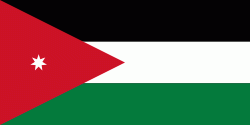Al Mazar al Shamali (Al Mazār ash Shamālī)
Al-Mazar Al-Shamali or Northern Al-Mazar (المزار الشمالي) is a town in the Irbid Governorate of north-western Jordan. Located 15 km south-west of Irbid it has a population of approximately 20,000 people and the major family (tribe or clan) is AL-Shorman. The region is a range of high series mountains that reach a height approximately 780 meters above the sea level. The main basic characteristics of the region is that it is surrounded by the many forest extended to hundreds kilometers. The forest has many trees such as aaks and pistacia and pine. Also the region rely on basic agricultural crops: wheat, barley, and also on some of the fruit trees such as peaches, apricots, almonds, etc. The olive tree is one of the most important products in the region in addition to grapes.
Al-Mazar Al-Shamali is the southern parts of Irbid Governorate with its high mountains of astonishing landscape, which are adjacent to Ajloun Mountains. It consists of the following 9 areas or districts: Al-mazar Al-shamali, Enbah, Dayr Yousef, Rhaba, Zobia, Juhfiya, Samad, Zaatarah, Habaka, and Hofa.
Al-Mazar Al-Shamali is the southern parts of Irbid Governorate with its high mountains of astonishing landscape, which are adjacent to Ajloun Mountains. It consists of the following 9 areas or districts: Al-mazar Al-shamali, Enbah, Dayr Yousef, Rhaba, Zobia, Juhfiya, Samad, Zaatarah, Habaka, and Hofa.
Map - Al Mazar al Shamali (Al Mazār ash Shamālī)
Map
Country - Jordan
 |
 |
| Flag of Jordan | |
Modern-day Jordan has been inhabited by humans since the Paleolithic period. Three stable kingdoms emerged there at the end of the Bronze Age: Ammon, Moab and Edom. In the third century BC, the Arab Nabataeans established their Kingdom with Petra as the capital. Later rulers of the Transjordan region include the Assyrian, Babylonian, Roman, Byzantine, Rashidun, Umayyad, Abbasid, and the Ottoman empires. After the Great Arab Revolt against the Ottomans in 1916 during World War I, the Greater Syria region was partitioned by Britain and France. The Emirate of Transjordan was established in 1921 by the Hashemite, then Emir, Abdullah I, and the emirate became a British protectorate. In 1946, Jordan gained independence and became officially known in Arabic as the Hashemite Kingdom of Jordan. The country captured the West Bank during the 1948 Arab–Israeli War and annexed it until it was lost to Israel in 1967. Jordan renounced its claim to the territory in 1988, and became the second Arab state to sign a peace treaty with Israel in 1994.
Currency / Language
| ISO | Currency | Symbol | Significant figures |
|---|---|---|---|
| JOD | Jordanian dinar | دا | 3 |
| ISO | Language |
|---|---|
| AR | Arabic language |
| EN | English language |















